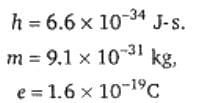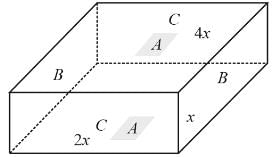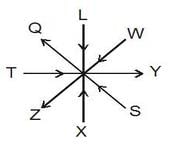SRMJEE Mock Test - 9 (Medical) - JEE MCQ
30 Questions MCQ Test - SRMJEE Mock Test - 9 (Medical)
Monochromatic light is refracted from air into glass of refractive index μ. The ratio of the wavelengths of the incident and refracted waves is
The longest wavelength in the Balmer series of hydrogen spectrum will be
A parallel plate capacitor is charged and the charging battery is then disconnected. If the plates of the capacitor are moved farther apart by means of insulating handles
de Broglie wavelength of photoelectrons is 1Å. What is the stopping potential?
As shown in the figure, a metal rod makes contact and completes the circuit. The circuit is perpendicular to the magnetic field, B = 0.15 T. If the resistance is 3 Ω, the force needed to move the rod at a constant speed of 2 m/s is:
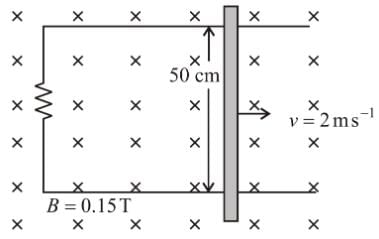
The following figure shows a rectangular block with dimensions x, 2x, and 4x. Electrical contacts can be made to the block between opposite pairs of faces (for example, between the faces labelled A−A, B−B, and C−C). Between which two faces would the maximum electrical resistance be obtained (A−A: Top and bottom faces, B−B: Left and right faces, and C−C: Front and rear faces)?
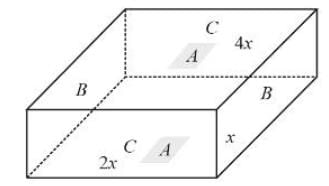
Determine the oxidation number of the underline atom in [Cu(NH3)4]2+
The polymer obtained by addition polymerisation of [x]. Which can be obtained by reaction between 1-chloro-2-phenyl ethane and potassium tertiary butoxide ?
i. All fishes possess a three-chambered heart.
ii. Fishes exhibit external fertilization predominantly.
iii. The body of fishes is streamlined to facilitate swimming.
iv. Fishes have a skeleton made entirely of cartilage.
The given figure shows an angiogram of the coronary blood vessel. Which one of the following statements correctly describes, what is being done?
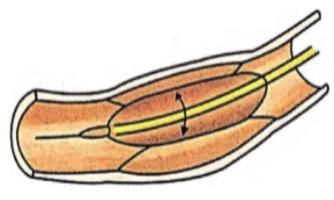
Read the following statements and select the correct option.
Statement 1: Brood parasitism in birds is an example of parasitism in which the parasitic bird lays its eggs in the nest of its host and the host incubates them.
Statement 2: During the course of evolution, the eggs of the parasite bird have evolved to resemble the host's eggs in size and colour to reduce the chances of the host bird detecting the foreign eggs and removing them from the nest.
The rise in stimulus-induced permeability to
a. Potassium ions
b. Sodium ions
c. Restoring RMP
d. Diffusion of potassium ions
Arrange them in order.
Assertion (A): Ethidium bromide is essential for visualizing DNA fragments during gel electrophoresis.
Reason (R): Ethidium bromide allows DNA to be seen under visible light without the need for UV radiation.
Identify the blank spaces A, B, C and D in the following table and select the correct answer.
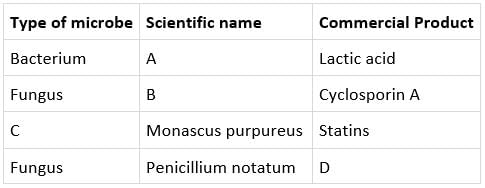
The most common fungal partners of mycorrhiza are _________ species.
Glycocalyx (mucilage sheath) of a bacterial cell may occur in the form of a loose sheath called ____ or it may be thick and tough called _____ .
Read the following information carefully and answer the questions given below
Eight members X, Y, Z, S, L, Q, T and W are sitting around a circle. Three persons are facing out side and five persons are facing inside. Y is sitting second to the right of X and third to the left of Z. Q is not the neighbour or X and Y. W is sitting second to the right of Q who is second to the right of Z. L is second to the left of Y and third to the right of S.
How many persons are sitting between L and Z, anti-clockwise with respect to Z?
Which of the following qualities can be attributed to Punna as inferred from the passage?
Choose the word/group of words which is the most similar in meaning to the word/group of words printed in underline as used in the passage.
Pounding






 again q is constant and C is decreasing.
again q is constant and C is decreasing. = Q. Hence, ampere-hour is the unit of electric charge.
= Q. Hence, ampere-hour is the unit of electric charge.



